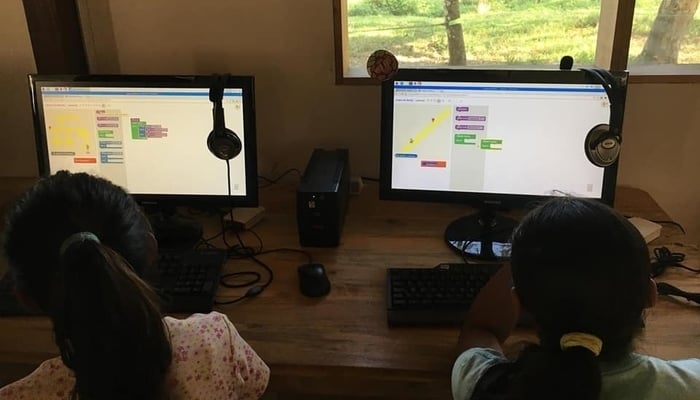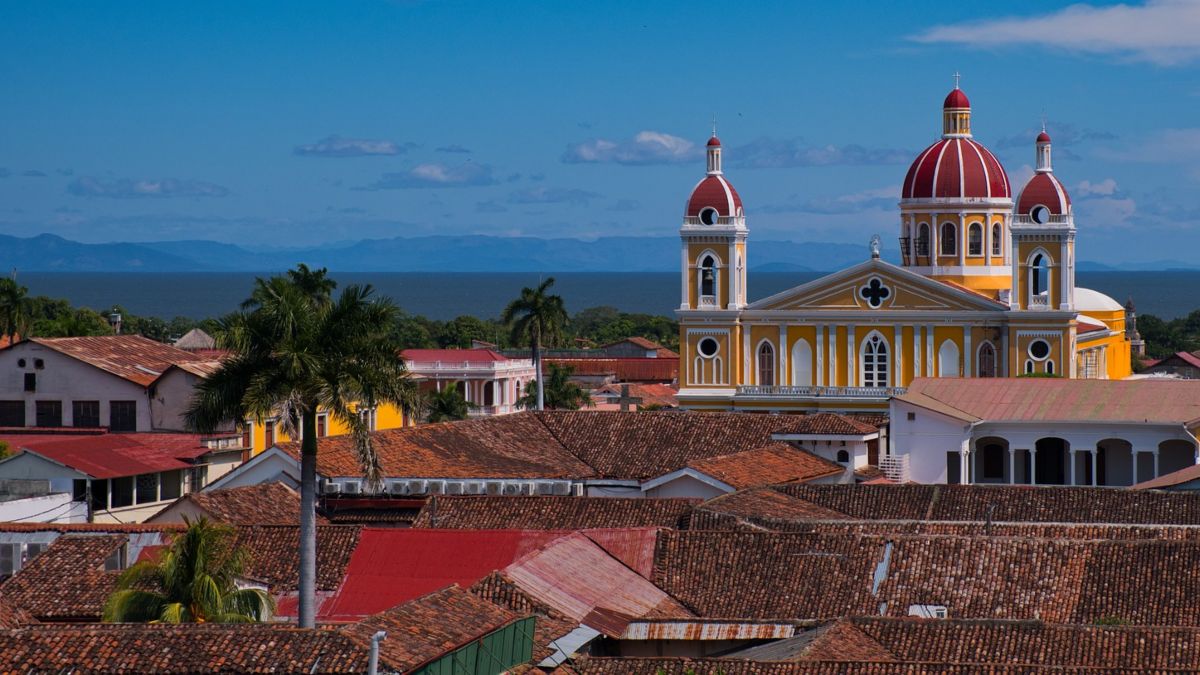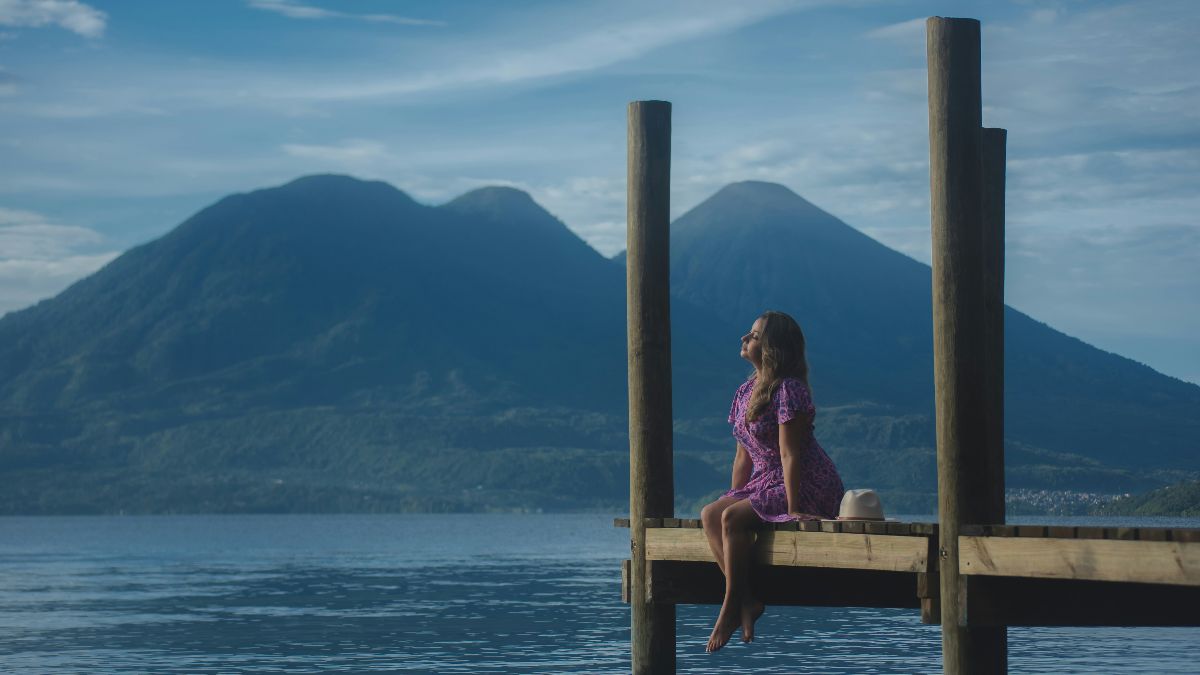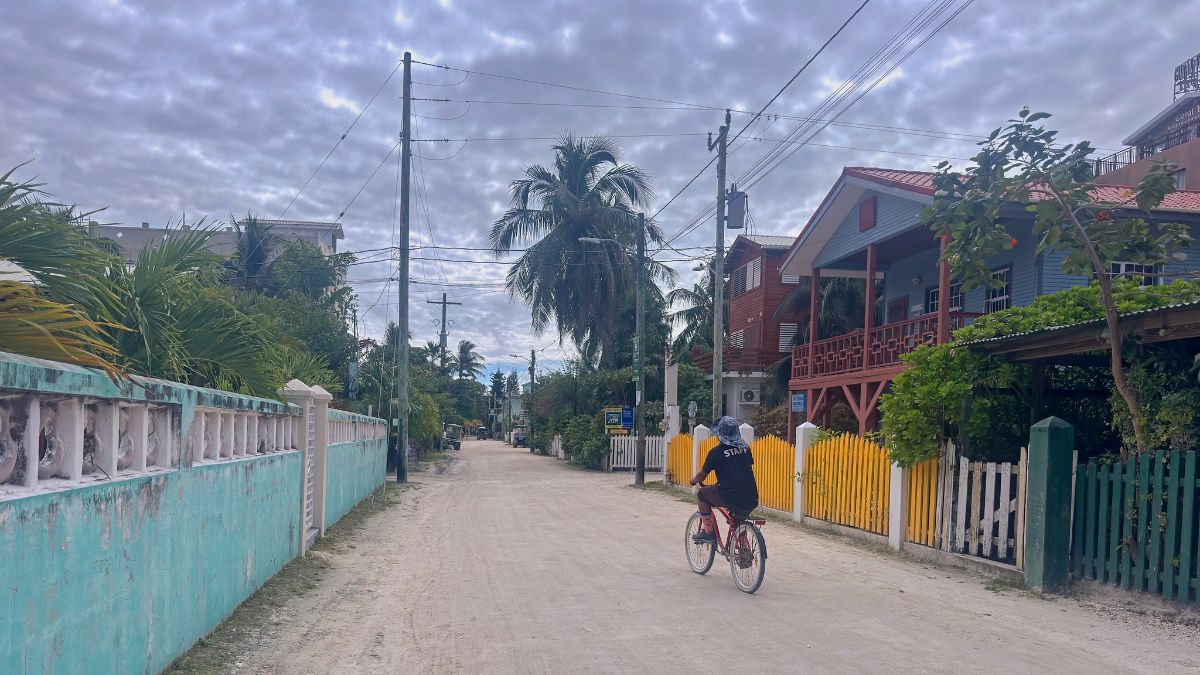Patricia Trigueros goes to the Polochic Valley, Guatemala to follow the work of Li Ch’utam, a non-profit working in the area to bring opportunity through technology to local people.
From the plane, you see the Polochic river way before it becomes time to land. “This river begins in the department of Huehuetenango and finishes in the Caribbean,” said the pilot. We were looking down on Baja Verapaz, heading to a farm in the Polochic Valley. We were heading to an organization in the crease between two mountain chains, mostly Qeq’chi’ communities.
78 percent of the Polochic valley is dedicated to agriculture. The heat made my clothes stick to my body and sweat dripped while I walked. `There were cornfields and I smelled lumber. The steam from the machines mixed with the clouds. Everyone working hard around these farms smiled as if the promise of the soon-to-come quiet from nightfall would give them the peace they need to do it all again tomorrow. There’s no light or sound after a certain hour in the Polochic Valley”.
A visit to the IT Center
“Look, here are the drawings the kids made,” said a volunteer. The drawings had beautiful shapes and colors. One action they implement is a series of work sessions for skill development: Reading, drawing, conversations through didactic materials and software. That afternoon upstairs, the kids were finishing a guided session of reading and drawing. Downstairs, young girls who had dropped out of school were receiving specialized computer classes, a program designed to pave a different path for this generation of women.
Working with Li Ch’utam
As part of the team from Little Coins multidisciplinary design studio, I was in the Polochic Valley to work with Li Ch’utam. Whether we would provide support with communication strategies in the long run or not, it was important to be there that weekend. It was necessary to check out the region. This is one of Guatemala’s most forgotten about, most isolated areas.
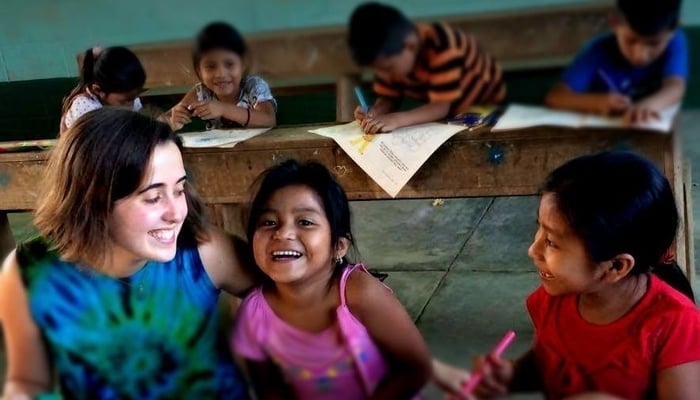
So the next day, we were ready to get our first workshop started. We ate breakfast and set out to brave the heat, walking from the volunteers’ house to the IT center. Fifty children between the ages of six and twelve took part in drawing a representation of nature individually, before drawing with each other collectively, a site-specific art installation. For this, we divided the group into small teams and assigned each team a leader.
They drew and drew again. They talked in Q’echi and posed for photos with their drawings. We wrapped up with a session of collecting nature sounds, together. Their mothers, local women, were preparing pizza from scratch in fireplace ovens. Another Li Ch’utam initiative teaches women new skills like cooking artisanal pizza.
Later in the afternoon we headed back to the volunteer house. I needed coffee and we had to pack.
One last look at the Polochic Valley
Driving from Li Ch’utam to Izabal, the neighboring department, you see mountains, unpaved roads, and plantations. It was getting dark early: September is especially humid, particularly cloudy. It was almost like we left the sun behind, in Li Ch’utam. On the right, one station called “Soledad”, which means loneliness. I took a photo of it; it was so appropriate. If it weren’t for the bridges over the Polochic, it would be very difficult to connect with the communities of the valley. It would be harder than it already it is to bring opportunities to these hard-to-reach places.
Patricia Trigueros is a free spirit, writer, and translator from El Salvador. She has the habit of drinking too much coffee and writing in English, French, and Spanish. Check out her blog, Paty Stuff, and follow her on Facebook, Twitter, and Instagram.
